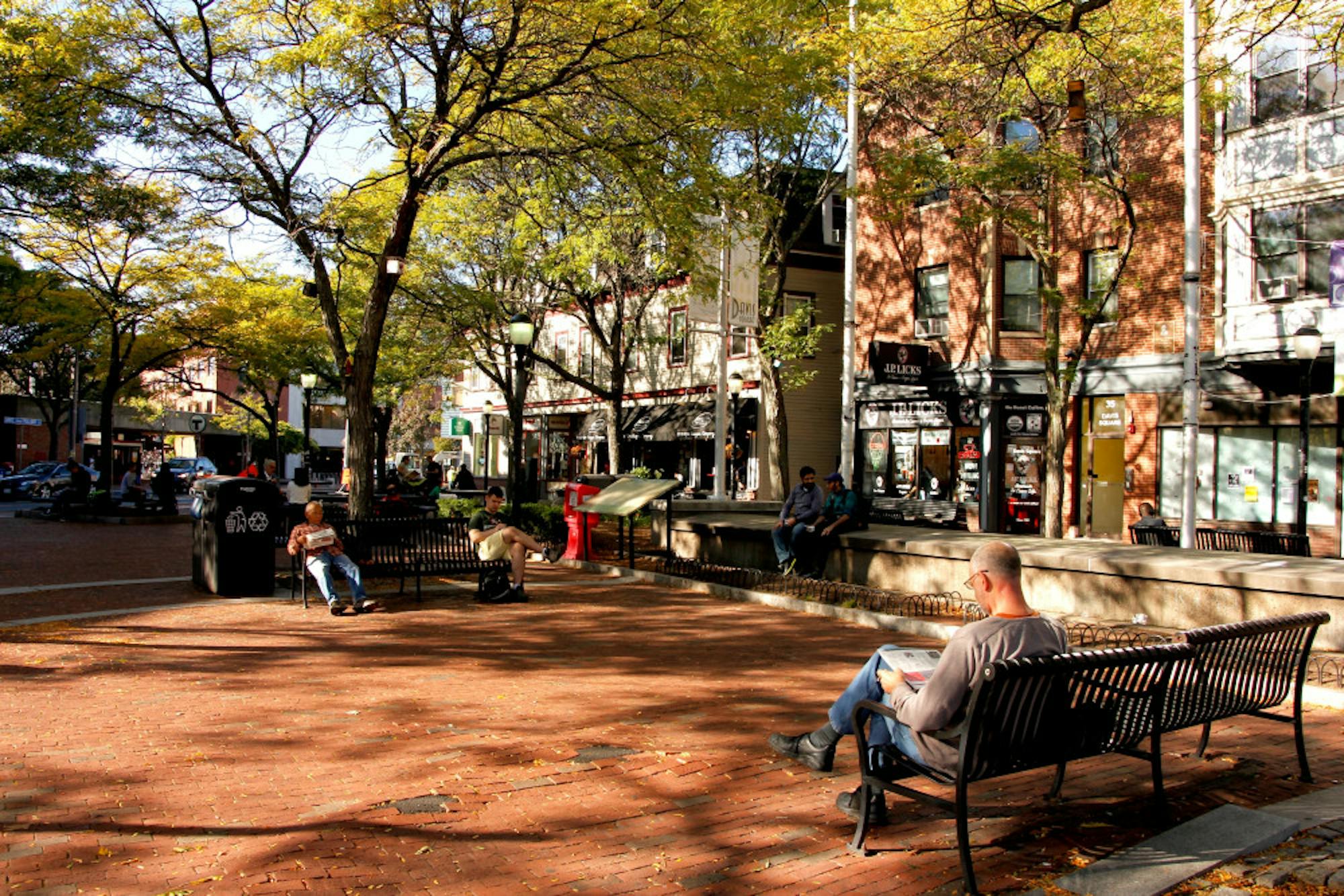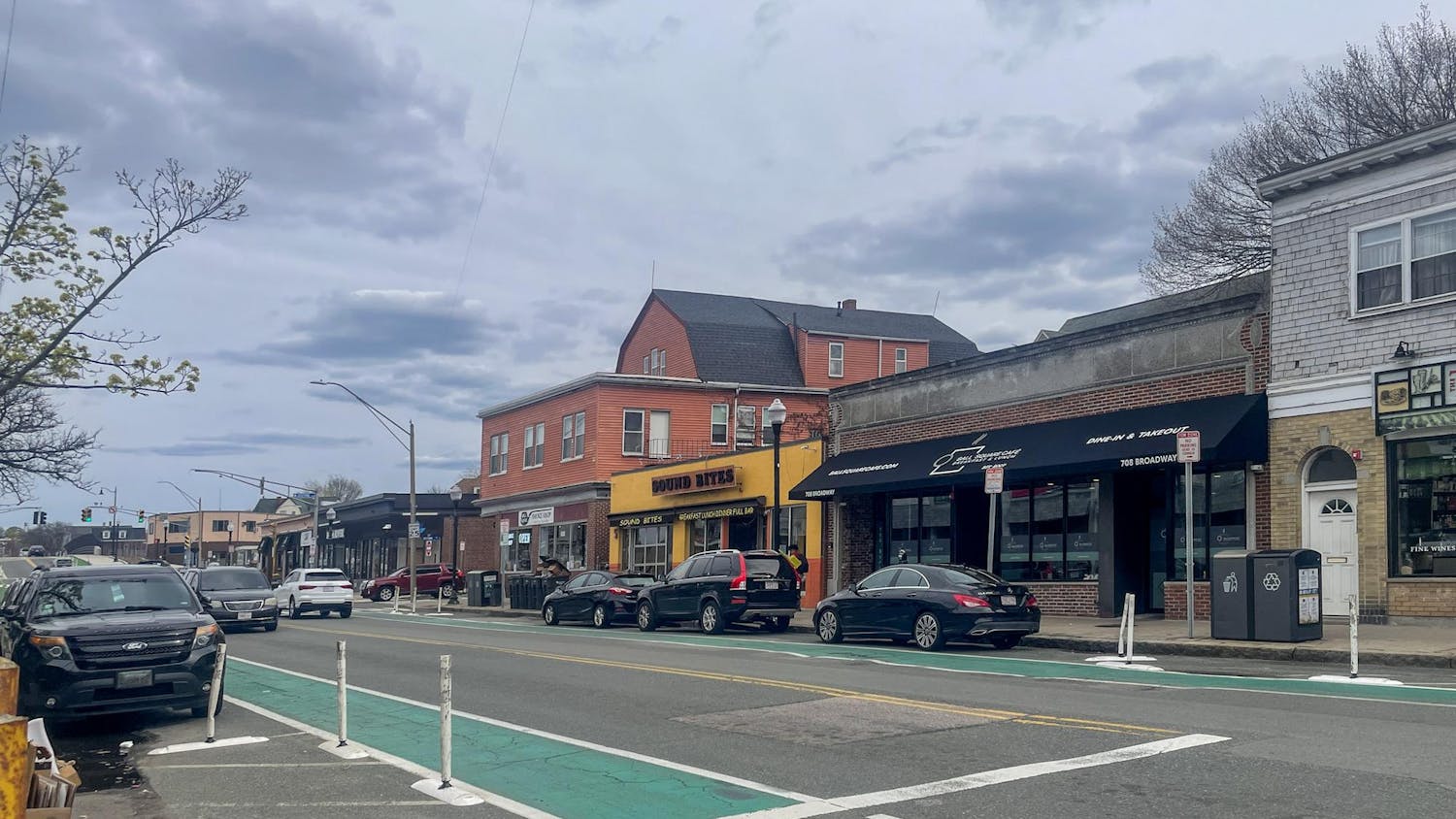The following article is part one of a two-part series focusing on local residents and businesses in West Somerville and their interactions with gentrification in the area.
The West Somerville community has certainly changed and developed since the founding of Tufts in 1852. However, in recent years, the area has undergone significant gentrification, resulting in notable changes to its housing market. Consequently, for many residents, the West Somerville neighborhood no longer reflects the one they lived in without the rise in housing prices, student presence and Tufts' impact.
Senior Mishla Baz moved into the Somerville area when her father got a job as a professor at Tufts. She then moved into a house on Sawyer Avenue, right in the heart of the Medford/Somerville campus. Her family later moved to the Teele Square area, still nearby campus.
She noted that the neighborhood around Tufts has undergone several changes since her family arrived.
“The area in general has definitely gotten more mainstream,” Baz said. “When we first moved here, Davis [Square] was considered a little sketchy. I guess it still is considered a little quirkier than Harvard or something, but it's definitely gotten more mainstream and gotten very gentrified.”
However, she noted that living nearby the Tufts campus, especially around fraternity houses, came with some downsides.
“I know that being a family that lived on campus, we had a very negative perspective of Tufts students,” Baz said. “I mean, I didn't personally, but we lived surrounded by all the fraternities, right next door to [the International] House. So I think that was the side that we saw, was my dad going out in the middle of the night to yell at them, or waking up with red solo cups and puke in our lawn. I think that's a pretty consistent view of local families and businesses.”
She noted that Somerville has a visible divide between residents who have lived in the area for a long time and the younger generation of students and young professionals who are moving into the city.
“I think that Davis still has the very 'townie' vibe,” she said. “If you go to The Burren, there's always the 'townies' and the college students.”
Baz said that part of this change in demographics may have to do with the rising prices of housing in the Greater Boston area.
“I think that Cambridge is considered super expensive, so when we first moved, we were looking in Somerville because Cambridge was really expensive, but the schools are better there, so there's kind of that balance,” Baz said. “But definitely more families are moving to Somerville and the schools are getting better because of that.”
Edward Beuchert, a resident of the Tufts neighborhood since 1998 and a board member of the West Somerville Neighborhood Association, said that the rise in cost of housing is also an issue in Somerville. Around Tufts especially, he said that the influx of students living off campus causes inflated prices.
“Rents have gone up quite dramatically,” Beuchert said. “There's basically a lot of families that had lived here before, when they sell their houses, they're being bought by investor, absentee landlords.”
Beuchert said that, because these absentee landlords evaluate houses based on the high profitability of renting to students, the valuation of properties rises.
“One reasonable, easy number to use for the annual rent around here for students is $10,000,” Beuchert said. “And they're able to look at that and say, 'Well, I can get $120,000 a year in revenue from that.' And that ends up bidding up the prices of the houses near Tufts to what's a very bad level.”
This ultimately leads to higher property taxes and rents for other residents.
“What a city does to calculate its property taxes, where it gets most of its revenue from, is from the housing values. So I end up having to pay a lot more money in property taxes because absentee landlords are buying up the properties next to me and packing them with students who are willing to pay that, because there's not enough dormitory space, because the Tufts administration doesn't want to build them,” Beuchert said.
Beuchert also described some of the difficulties of living among college students that echoed Baz's experience. A house adjacent to Beuchert's was rented out to students who he said would use an outdoor balcony for smoking and parties, making significant noise.
“You'd have people going out there at not just 10 p.m., but midnight, 2 a.m., 4 a.m. on weekends,” he said.
Besides students, Beuchert said that the demographics of the area are changing more broadly. Years ago, West Somerville was home to more families and working class individuals, as described by a Sept. 25 Tufts Observer article.
According to the 2011–2015 American Community Survey estimates, only 34 percent of housing units are owner-occupied in Somerville. Additionally, the survey estimatesstate that of Somerville households, 82.1 percent have no related children under the age of 18, and 56.6 percent are nonfamily households.
As Baz explained, Somerville overall has gentrified drastically, and a younger generation has subsequently moved in.
Beuchert said that Somerville remains an attractive city for him and his family to live in.
“There are several dynamics going on here. And one of them is that Somerville is a very desirable place to live. And I understand that. That's why I live here with my family,” Beuchert said.
He pointed to the house across the street from his, which was originally owned by a family with young children, as an example of the changing demographics in the city.
“Now they rent it out to young professionals, and there's a lot of turnover with that,” he said. “And I'm not saying that's a bad thing, but it's pretty much every other month ... that I see moving trucks out there.”
Nevertheless, Beuchert attributed much of the problem with the neighborhood around Tufts to the shortage of dormitory housing provided by the Tufts administration.
“I understand how the quad is a beautiful place that you want to have on top of the hill. The fact that it's open and doesn't have the shadow from a big building — that's great. I really have come to love a lot of things about the Tufts campus, and I can understand deeply and identify with the Tufts community about what a great campus it is and if we're gonna grow, the growth has got to span out from here,” Beuchert said.
He was especially critical of the proposed Capen Village project, which seeks to create a new student housing area in existing buildings in Medford, as described in an Oct. 16 Daily article.
“It's a colonization of Medford and Somerville residential areas,” he said. “Tufts is buying residential houses and [it has] turned them into Tufts buildings for various purposes.”
Beuchert proposed that the university could invest more in building dorm buildings rather than increasing academic space, pointing to the proposed building at College Avenue next to Halligan Hall, described in a Sept. 5 Daily article, as an example of a possible location.
Executive Director of Public Relations Patrick Collins, however, said that the university is working toward increasing the number of beds in existing dorms through renovations. Speaking of the proposed Capen Village project, he said that some residents have responded favorably to the proposal.
"We have received positive responses from neighbors who see this as a better way to have students live in the neighborhood than within properties owned by absentee landlords," Collins told the Daily in an email. "They are also pleased to hear that Tufts will supervise the apartments with graduate resident directors and maintain the properties. While most landlords are very responsible, some of these properties have not been well maintained."
Collins also pointed to rising housing prices in areas around Medford and Somerville as evidence of a trend that goes beyond Tufts' impact.
"There are many reasons why property costs have risen across the Greater Boston area," Collins said. "In Somerville, rents and housing purchase prices have risen dramatically across the city and not just in the area around Tufts. Housing costs in nearby communities that do not have colleges, such as Arlington, also have risen. Additionally, the Green Line extension also is making the area more attractive to renters and buyers."
Collins added that Tufts is committed to working with neighbors and city officials throughout the process of expanding housing on the Somerville side of campus.
While there are certainly implications in the surrounding community brought about by the growth of Tufts, some of these implications can be positive. Beuchert said that he has audited several classes at Tufts, deejays his own radio show at WMFO, Tufts' freeform radio station, and attends the weekly Environmental Studies Lunch & Learn lectures.
“I think that, while there certainly are negative aspects of the way the Tufts administration has handled their increased enrollment ... I also feel that my life has been tremendously enriched by living here,” he said.
Living near Tufts: West Somerville's housing gentrification and a future with the university

Davis Square, a neighborhood just a 15-minute walk from Tufts' campus, has faced gentrification in the past few years. The square is pictured on Oct. 19.





